How to Anchor a Boat Safely: Step-by-Step Guide for Beginners

At some point in your boating career you will probably want to anchor. You may want to stop and fish, swim, have lunch or stay overnight. A second reason to drop anchor may be to control the boat if bad weather is blowing you ashore or if your engine has quit and the wind and current are pushing you into shallow water or other boats.
What is proper technique for anchoring?
- Select an area that offers maximum shelter from wind, current, boat traffic etc. Never anchor in a busy channel or traffic separation zone.
- To avoid swamping your boat, you should slowly lower the anchor from the bow of your boat. Anchoring from the stern could cause the boat to swamp or capsize.
- Pick a spot with swinging room in all directions. Should the wind change, your boat will swing bow to the wind or current, whichever is stronger.
- Determine depth and bottom conditions and calculate the amount of rode you will put out.
- If other boats are anchored in the area you select, ask the boat adjacent to the spot you select what scope they have out so that you can anchor in such a manner that you will not bump into the neighboring vessel.
- Anchor with the same method used by nearby boats. If they are anchored bow and stern, you should too. If they are anchored with a single anchor from the bow, do not anchor bow and stern. Never anchor from the stern alone, this could cause the boat to swamp or capsize.
- Rig the anchor and rode. Check shackles to make sure they are secured with wire tied to prevent the screw shaft from opening.
- Lay out the amount of rode you will need on deck in such a manner that it will follow the anchor into the water smoothly without tangling.
- Cleat off the anchor line at the point you want it to stop. (Don’t forget or you’ll be diving for your anchor.)
- Stop your boat and lower your anchor until it lies on the bottom. This should be done up-wind or up-current from the spot you have selected. Slowly start to motor back, letting out the anchor rode. Backing down slowly will assure that the chain will not foul the anchor and prevent it from digging into the bottom.
- When all the anchor line has been let out, back down on the anchor with engine in idle reverse to help set the anchor. (Be careful not to get the anchor line caught in your prop.)
- While reversing on a set anchor, keep a hand on the anchor line. A dragging anchor will telegraph itself as it bumps along the bottom. An anchor that is set will not shake the line.
- When the anchor is firmly set, look around for reference points in relation to the boat. You can sight over your compass to get the bearing of two different fixed points (house, rock, tower, etc. ) Over the next hour or so, make sure those reference points are in the same place. If not you’re probably dragging anchor.
- Begin anchor watch. Everyone should check occasionally to make sure you’re not drifting.
- Retrieve the anchor by pulling or powering forward slowly until the anchor rode hangs vertically at the bow.
- Cleat the line as the boat moves slowly past the vertical. This will use the weight of the boat to free the anchor and protect you from being dragged over the bow.
- Once free, raise the anchor to the waterline.
- Clean if necessary and let the rode dry before stowing away.
- Remember, boats don't have breaks and an anchor may be your only way to stop the boat's movement.
- Make sure that the anchor and its lines are strored in a place that is easily accessible. The anchor may be used as a safety device if an emergency occurs. You may drop the anchor quickly to avoid running aground in the event that the the engine breaks down. The anchor may also be used to kedge off. It is a method of pulling a boat out of shallow water when it has run aground. In small boats, the anchor may be thrown in the intended direction of progress and hauled in after it settles, thus pulling the boat in the direction of progress, while a larger boat can use a dinghy to carry the anchor ahead, then drop it and haul the boat.
What should be remembered when anchoring?
The first step in anchoring is to select the proper anchor. In spite of claims to the contrary, there is no single anchor design that is best in all conditions.
What are the 3 most common types of anchors?
The danforth anchor
How does a danforth anchor work?
The danforth is among the best of the small boat anchors. It produces strong holding power, because of the thin large flukes and when under a heavy strain, the flukes bury themselves very deeply.
Best in sand or soft mud, but reduced or no holding in grass, rock, and clay.
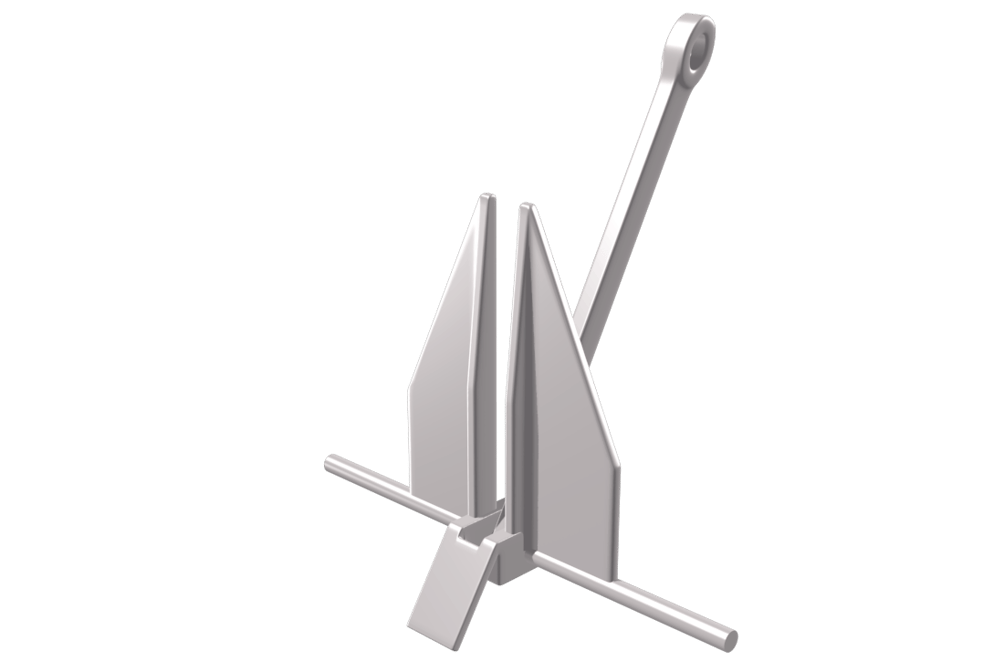
The plow anchor
How does a plow anchor work?
The plow anchor as the name implies, are shaped like a farmer's plow, with a long shank ending in two curved flukes.
Works best in sand, rock, mud.
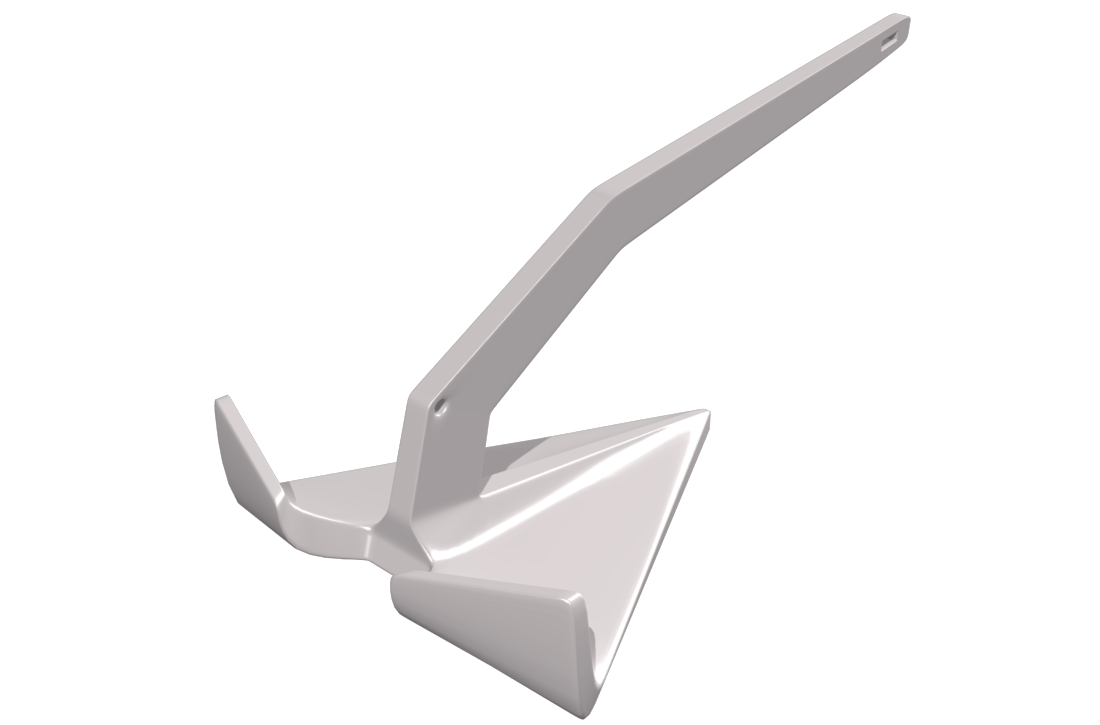
The mushroom anchor
How does a mushroom anchor work?
The mushroom anchor is indeed shaped like a mushroom. The mushroom anchor sinks to a bottom filled with soft sediment and that sediment, mud and silt settle into the mushroom. This sediment will bury the mushroom anchor and keep it in place.
Works best in sand and mud.
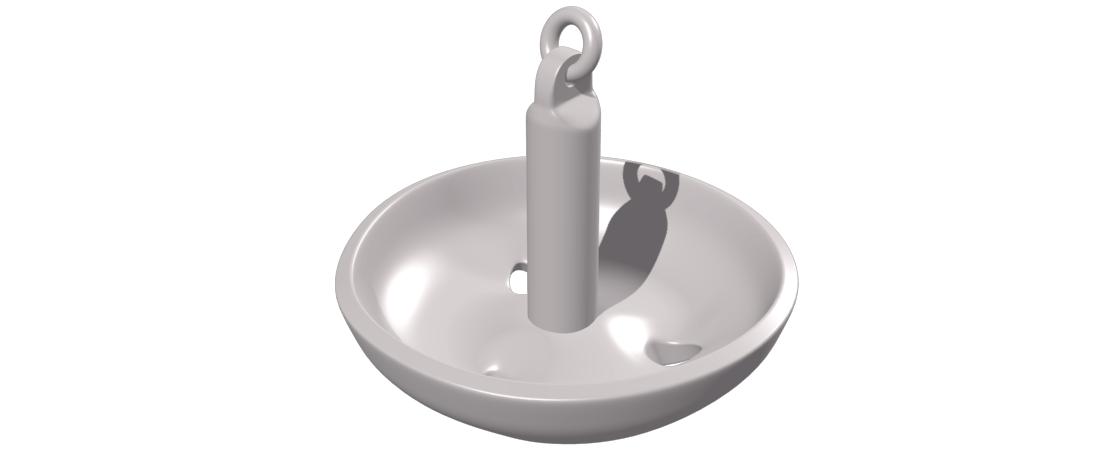
Mushroom anchors do not have the holding power of a fluke or plow anchor and should only be used on small, lighter weight boats. A local marine supply store can help you select the proper anchor for your boat and for the waters in which you will be boating.
What is rode on an anchor line?
Anchors also must have something to attach them to the boat. This is called the anchor rode and may consist of line, chain or a combination of both. The whole system of gear including anchor, rode, shackles etc. is called ground tackle.
The amount of rode that you have out (scope) when at anchor depends generally on water depth and weather conditions. The deeper the water and the more severe the weather, the more rode you will put out.
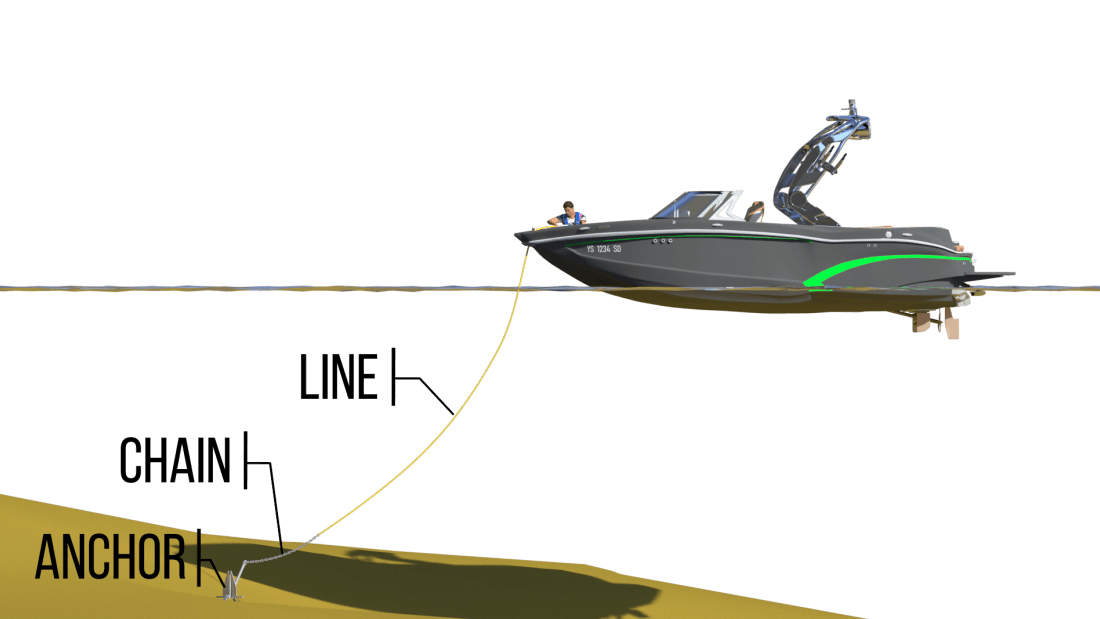
How long should boat anchor line be?
For recreational boaters, at a minimum you should have out three times the depth of the water plus the distance from the water to where the anchor will attach to the bow.
- 3 to 1 scope for day anchoring.
- 7 to 10 to 1 for overnight anchoring.
What is the formula for anchoring length?
(depth of the water + freeboard) x 3 or 7
For example, if you measure water depth and it shows 10 feet and it is 3 feet from the top of the water to your bow cleat, you would multiply (10+3=13) feet by 3 or 7 to get the amount of rode to put out.
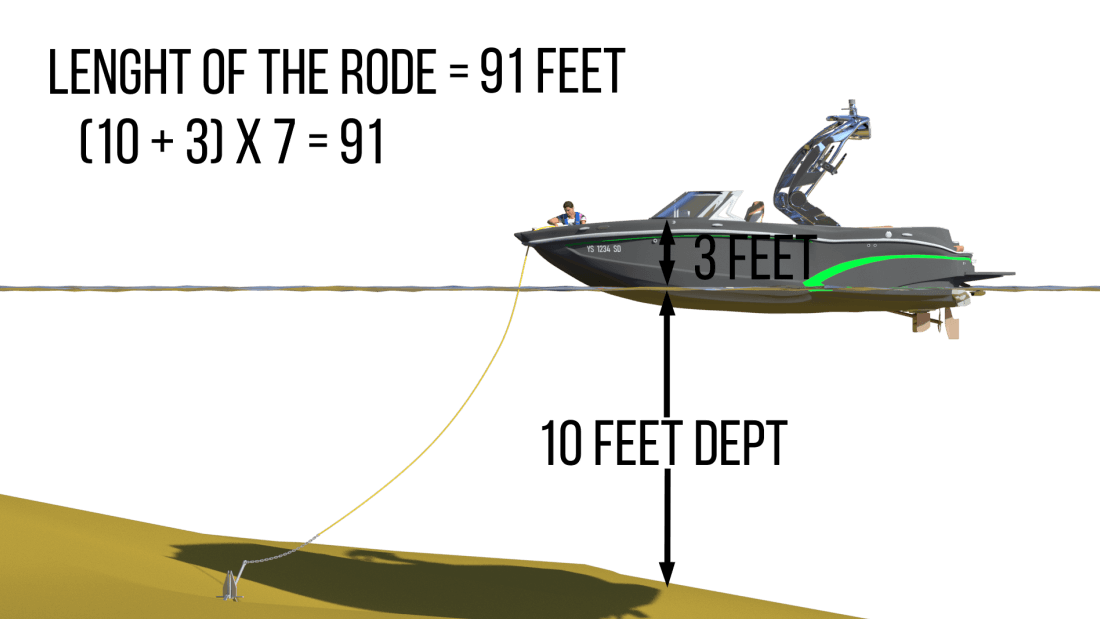
Retrieving the Anchor
Retrieving an anchor safely and efficiently is just as important as setting it properly. Done correctly, it protects your boat, crew, and equipment while minimizing damage to the seabed. The process should always be calm, deliberate, and coordinated among those on board.
Begin by starting the engine and idling slowly in the direction of the anchor. This relieves the tension on the anchor line or chain, making it easier to retrieve. Always keep the boat directly above the anchor rode, avoiding sharp angles that can cause strain or snapping. Assign one crew member to operate the bow while another carefully maneuvers the boat from the helm.
Next, start pulling in the anchor rode — whether by hand or using a windlass. As you haul in the line, make sure it comes aboard smoothly and doesn’t tangle. Keep a steady pace and never wrap the line around your hands or body. If the anchor line is chain, take care to handle it with gloves and keep it clear of feet or deck fittings. Coil or stack the line neatly on deck as it comes in, ready for the next use.
When you feel the rode becoming vertical, the boat should be almost directly above the anchor. At this point, the anchor is said to be “at short stay.” If the anchor does not break free immediately, use the boat’s engine in reverse or gently maneuver forward over the anchor’s position. The change in direction often loosens the anchor from the bottom. Avoid excessive force — pulling too hard can damage both the anchor and the boat’s cleats.
Once the anchor is free, slowly bring it aboard, keeping clear of swinging metal. Wash off any mud or debris with a bucket or deck hose before stowing it securely in the anchor locker or bracket. Ensure the flukes are locked in place and the rode is neatly coiled to prevent tangles.
Finally, check your surroundings before moving off. Make sure the anchor is fully secured and the locker hatch is closed. With the anchor retrieved and properly stowed, your boat is ready to get underway safely — leaving the anchorage as clean and undisturbed as when you arrived.
How to Know if Your Anchor Is Dragging
Knowing whether your anchor is holding or dragging is essential for safety at anchor. A dragging anchor can cause your boat to drift into shallow water, other vessels, or shorelines — especially in wind or current. Here are the key signs and methods to tell if your anchor is dragging:
1. Check Visual Landmarks
Pick two or three fixed points on shore — like trees, buildings, or buoys — and note their alignment when you first anchor. If those points change position relative to each other, your boat is likely moving and your anchor may be dragging. This is the simplest and most traditional method.
2. Monitor the GPS or Chartplotter
Most modern boats use GPS or chartplotters that show your position on the screen. After setting the anchor, mark your anchorage waypoint. If your position drifts beyond the swing radius expected for your anchor line length, the system will show it clearly. Some GPS units even have anchor-drag alarms that alert you if you move outside a preset distance.
3. Use a Bearing Compass
Take a compass bearing on a fixed object ashore immediately after anchoring. Recheck the bearing periodically. A significant change (more than what’s expected from wind or tide swing) means your boat is moving and the anchor might not be holding.
4. Feel the Anchor Line
You can often feel or hear the difference between a holding anchor and one that’s dragging. A firm, steady tension in the rode usually means the anchor is dug in. If it feels jerky or vibrates with scraping noises, the anchor could be skipping along the bottom instead of holding.
5. Observe Boat Motion and Alignment
A properly anchored boat will pivot smoothly into the wind or current. If your vessel drifts sideways or in circles instead of maintaining a steady heading, the anchor may have lost its grip.